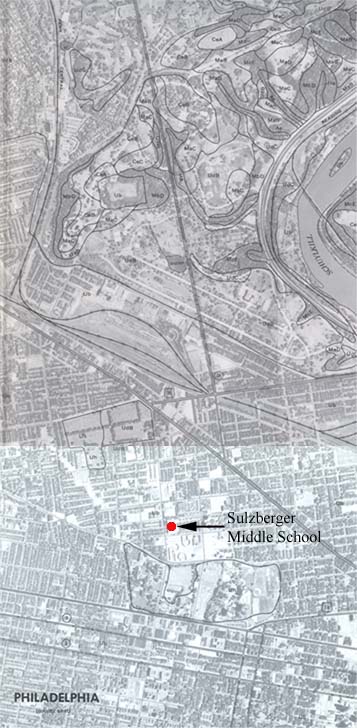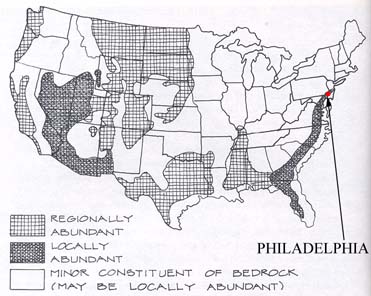| SOILS |
||
| The soils of Philadelphia
are generally derived from the underlying geology, a hard rock
called schist. Wind, rain, and erosion constantly exert pressure on the rock.
This weathering produces soil. Schist gives rise to
rich soils high in minerals and nutrients. The local soils types vary in texture, color, and moisture retentiveness, even though they all are derived from a similar mineral base. The soils of Philadelphia were once a rich mosaic of alluvium, or soil that was carried and deposited by the flow of the Schuylkill and the Delaware Rivers. Today, most urban soils within Philadelphia have been so greatly altered by construction, building rubble, industry, and dumping that they no longer resemble their former selves. The properties of all urban soil are similar to a depth of several feet, in places much deeper. However, remnants of the natural patchwork of alluvial soils is still evident in Fairmount Park, and at cemeteries and other sites that have remained relatively undisturbed since colonial times. |
|
|
| Most soils maintain a
fairly constant structure independent of their moisture content. However, in some
places soils change their structure with the addition or subtraction of water. These
places are known as having expansive soils. Philadelphia is in a region that experiences locally expansive soils. That means the ground in some parts of Philadelphia may expand and contract more than normal. This phenomenon could result in the rapid deterioration of built structures. Altering the underlying watertable in an area would serve to exacerbate this problem. |
|
|
|
|
REFERENCES
|


